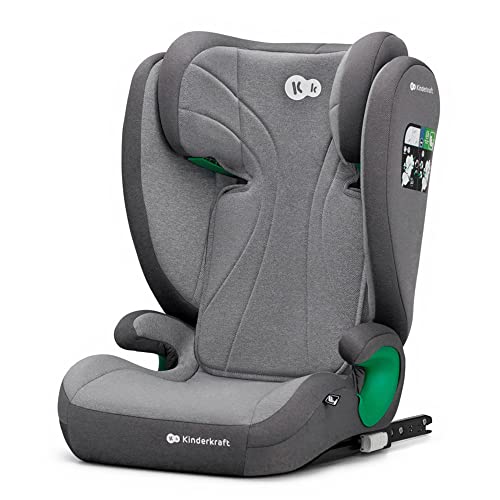Understanding Prams and Pushchairs: A Comprehensive Guide
When getting in the world of being a parent, among the most important choices to make includes choosing the best equipment for transporting a newborn or young child. Amongst the top competitors for this purpose are prams and pushchairs. Both serve the fundamental function of helping moms and dads and caregivers carry their kids easily, but they have distinct features, advantages, and utilize cases that set them apart. This short article aims to explore prams and pushchairs in-depth, assisting potential purchasers through their necessary distinctions, benefits, and features, and dealing with often asked concerns.
What is a Pram?
A pram, brief for "perambulator," is a type of vehicle designed particularly for infants. It includes a totally reclining seat or bassinet, so a baby can lie flat while being transported. This is particularly important for newborns whose spines are still establishing. Prams frequently have bigger wheels, offering a smoother trip on different surfaces.
Secret Features of Prams:
- Fully Reclining Seat: Allowing infants to lie flat.
- Bassinet Design: Some models include a removable bassinet.
- Spacious Interior: Adequate area for the child to move comfortably.
- Robust Frame: Designed to be more steady, ideally fit for urban and backwoods.
Benefits of Prams:
- Comfort: Provide a cozy space for the baby.
- Flexibility: Many can be transformed to a pushchair as the kid grows.
- Stability: Larger wheels and frames offer higher stability, particularly on irregular terrain.
What is a Pushchair?
A pushchair is a lightweight alternative often utilized for toddlers. Unlike Luxury Prams For Babies , pushchairs usually include a seat that can sit upright and may not offer a totally reclining alternative, making them ideal for older babies who can support their heads and necks. A lot of modern pushchairs included numerous functions geared towards convenience for the moms and dad and convenience for the child.
Key Features of Pushchairs:
- Multi-position Seats: Can cater to sitting upright or reclining options.
- Light-weight Design: Easier to bring and maneuver.
- Foldable Framework: Often fold compactly for easy storage and transport.
- Larger Storage Baskets: Convenient for carrying baby basics.
Advantages of Pushchairs:
- Lightweight and Portability: Easy to transport and store.
- Steerability: Smaller wheels permit sharper turns.
- Ease of access: Easier access to older toddlers.
Key Differences Between Prams and Pushchairs
| Function | Pram | Pushchair |
|---|---|---|
| Age Recommendation | Newborn to 6 months | 6 months to 4 years |
| Seat Position | Completely reclined | Multi-position |
| Weight | Heavier | Lightweight |
| Terrain Usage | Suitable for all terrains | Best for city/urban environments |
| Size | Larger, bulkier | Compact, simple to fold |
Choosing the Right Option for Your Needs
The choice to choose in between a pram and a pushchair largely depends upon your particular lifestyle and your child's age. Here is a breakdown of factors to consider to help narrow down the alternatives:
Considerations for Prams:
- If you live in a backwoods with rough surface, a tough pram may be more suitable.
- If you prepare to utilize it for long walks or getaways, the convenience of a pram can be useful.
- Suitable for parents who want a design that will easily support a newborn.
Factors to consider for Pushchairs:
- If you need something light-weight for city living or public transport, a pushchair might be a better fit.
- For parents who desire a versatile choice for young children with different position settings.
- If storage space is a concern, the compact nature of pushchairs supplies a solution.
Common FAQs
1. Can you utilize a pushchair for a newborn?
While lots of contemporary pushchairs use reclining seats that can be utilized for newborns, it's generally recommended to utilize a pram or a pushchair with a bassinet choice for adequate assistance.
2. How long can you utilize a pram or a pushchair?
Prams are normally utilized for infants approximately 6 months, while pushchairs can be appropriate for children as much as 4 years or more, depending upon the design.
3. Are prams more expensive than pushchairs?
Prams are often pricier due to their design, flexibility, and products. Nevertheless, costs can vary extensively depending on brand name, functions, and age recommendations.
4. Is it required to have both a pram and a pushchair?
Not always. Many parents go with a 2-in-1 system that combines both features, allowing them to adjust as their kid grows.
5. What should I focus on in selecting one?
Prioritize safety features, convenience, weight, size, and how well it suits your lifestyle. Read reviews, and test drive different designs when possible.
Choosing between a pram and a pushchair is an important choice for new moms and dads and caregivers. Both options have unique features that accommodate various age ranges and way of lives. By comprehending these essential differences, benefits, and recommendations, parents can make a more educated option that fulfills their family's needs. Whether embarking on a leisurely stroll in the park or browsing the hustle and bustle of city streets, the right pram or pushchair can enhance the experience, supplying security and comfort for both the child and the caretaker.

